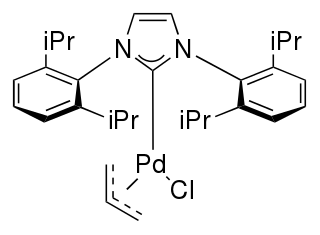
Edith Louisa Cavell was a British nurse. She is celebrated for treating wounded soldiers from both sides without discrimination during the First World War and for helping some 200 Allied soldiers escape from German-occupied Belgium. Cavell was arrested, court-martialled under German military law and sentenced to death by firing squad. Despite international pressure for mercy, the German government refused to commute her sentence, and she was shot. The execution received worldwide condemnation and extensive press coverage.

Cardiff University is a public research university in Cardiff, Wales. It was established in 1883 as the University College of South Wales and Monmouthshire and became a founding college of the University of Wales in 1893. It was renamed University College, Cardiff in 1972 and merged with the University of Wales Institute of Science and Technology in 1988 to become University of Wales College, Cardiff and then University of Wales, Cardiff in 1996. In 1997 it received degree-awarding powers, but held them in abeyance. It adopted the operating name of Cardiff University in 1999; this became its legal name in 2005, when it became an independent university awarding its own degrees.

Mount Edith Cavell is a mountain in the Athabasca River and Astoria River valleys of Jasper National Park, and the most prominent peak entirely within Alberta.

Stanley Louis Cavell was an American philosopher. He was the Walter M. Cabot Professor of Aesthetics and the General Theory of Value at Harvard University. He worked in the fields of ethics, aesthetics, and ordinary language philosophy. As an interpreter, he produced influential works on Wittgenstein, Austin, Emerson, Thoreau, and Heidegger. His work is characterized by its conversational tone and frequent literary references.

John Addison Porter was an American professor of chemistry and physician. He is the namesake of the John Addison Porter Prize and was a founder of the Scroll and Key senior society of Yale University.

Sir Roger Manwood's School is a grammar school located in the medieval town of Sandwich, Kent, England. Founded in 1563, it is one of the oldest schools in Britain and the third oldest state grammar school in Kent. Originally an all-boys school, the school became co-educational in 1982 and welcomed boarders until 2020. It now solely operates as a day school.
Linguistic film theory is a form of film theory that studies the aesthetics of films by investigating the concepts and practices that comprise the experience and interpretation of movies.
John Kingsmill Cavell was a British Anglican bishop. From 1972 to 1984, he was the ninth Bishop of Southampton, a suffragan bishop in the Diocese of Winchester.
Kingsley Daniel Jones was a Wales international rugby union player.

John Anthony Pickett is a British chemist who is noted for his work on insect pheromones. Pickett is Professor of Biological Chemistry in the School of Chemistry at Cardiff University. He previously served as the Michael Elliott Distinguished Research Fellow at Rothamsted Research.

Stephen James Lippard is the Arthur Amos Noyes Emeritus Professor of Chemistry at the Massachusetts Institute of Technology. He is considered one of the founders of bioinorganic chemistry, studying the interactions of nonliving substances such as metals with biological systems. He is also considered a founder of metalloneurochemistry, the study of metal ions and their effects in the brain and nervous system. He has done pioneering work in understanding protein structure and synthesis, the enzymatic functions of methane monooxygenase (MMO), and the mechanisms of cisplatin anticancer drugs. His work has applications for the treatment of cancer, for bioremediation of the environment, and for the development of synthetic methanol-based fuels.

Vanadium(V) fluoride is the inorganic compound with the chemical formula VF5. It is a colorless volatile liquid that freezes near room temperature. It is a highly reactive compound, as indicated by its ability to fluorinate organic substances.
Graham John Hutchings CBE FRS FIChemE FRSC FLSW is a British chemist, Professor for Research at Cardiff University.

Thiophosphoryl fluoride is an inorganic molecular gas with formula PSF3 containing phosphorus, sulfur and fluorine. It spontaneously ignites in air and burns with a cool flame. The discoverers were able to have flames around their hands without discomfort, and called it "probably one of the coldest flames known". The gas was discovered in 1888.
Phosphoryl fluoride is a compound with the chemical formula POF3. It is a colorless gas that hydrolyzes rapidly. It has a critical temperature of 73 °C and a critical pressure of 4.25 bars.

St Leonard's Hospital is a hospital in Hoxton, London.

In organometallic chemistry, palladium-NHC complexes are a family of organopalladium compounds in which palladium forms a coordination complex with N-heterocyclic carbenes (NHCs). They have been investigated for applications in homogeneous catalysis, particularly cross-coupling reactions.
Nora Henriette de Leeuw is the inaugural executive dean of the Faculty of Engineering and Physical Sciences at University of Leeds. Her research field is computational chemistry and investigates biomaterials, sustainable energy, and carbon capture and storage.
Citizen Saint: The Life of Mother Cabrini is a 1947 film about a Catholic saint. It was directed by Harold Young. It was produced by Clyde Elliott Attractions. It is about Frances Xavier Cabrini, an Italian woman who becomes a nun and is eventually sainted. The film includes songs.
Cavell was originally the name of a township in East Riding of Yorkshire. Its meaning was taken from Old English 'Cafeld' meaning a 'field of jackdaws'. In the Domesday Book it is spelt in a Norman variant as 'Cheuede', but later developed into Cavil. The Pipe Rolls record Thomas de Kauill in 1190 living in Yorkshire. Robert de Cavilla appears in the Hundred Rolls of Lincolnshire the following century. By the early modern period the name is also spelt Cavell and Cavill.












